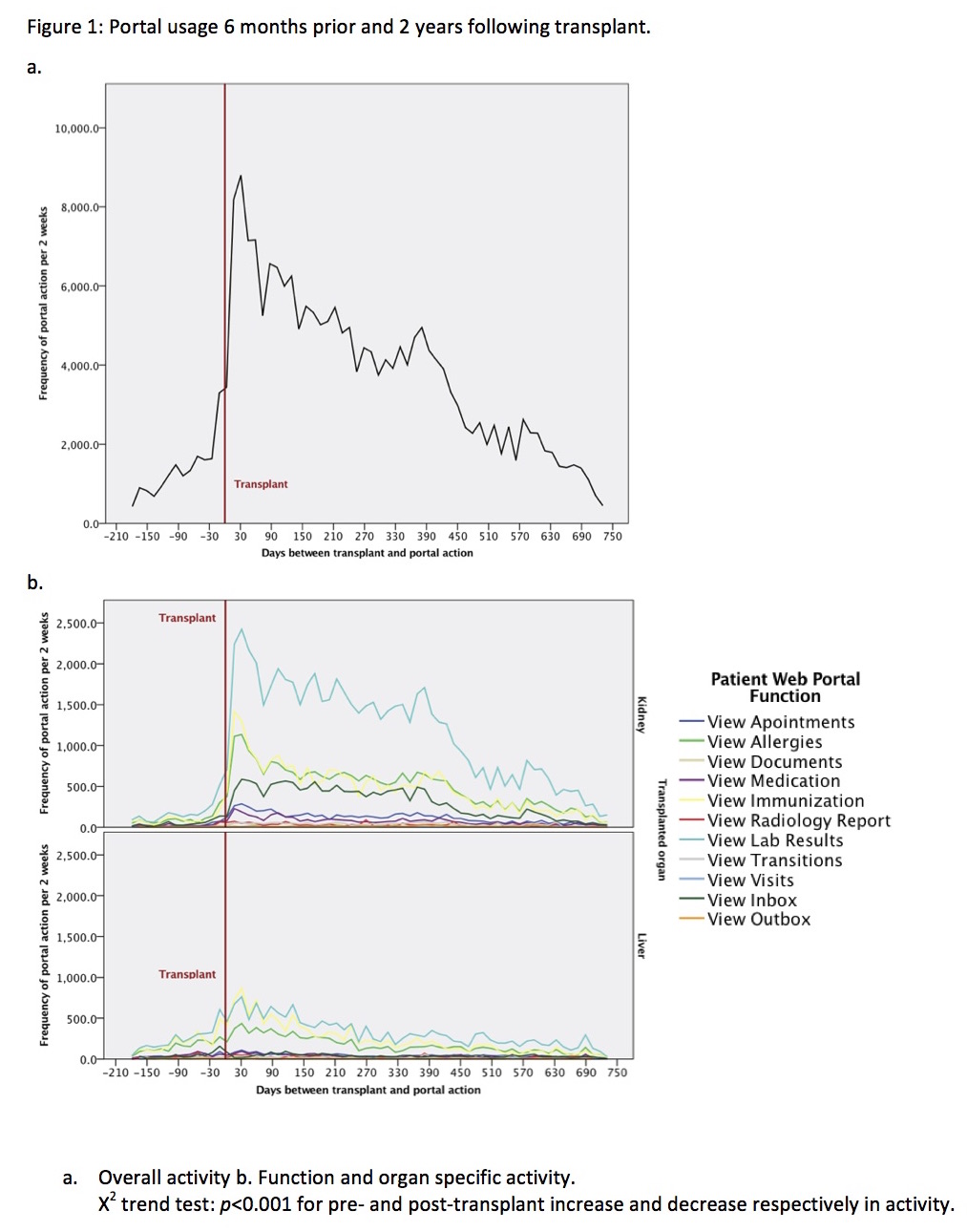Electronic Patient Portal Functionality Among Kidney and Liver Transplant Recipients.
A. Ruiz, K. Smith, J. Wedd, K. Little, S. Pastan, R. Patzer.
Surgery, Emory University, Atlanta, GA
Meeting: 2017 American Transplant Congress
Abstract number: C249
Keywords: Kidney, Liver, Outpatients, Resource utilization
Session Information
Session Name: Poster Session C: Psychosocial and Treatment Adherence
Session Type: Poster Session
Date: Monday, May 1, 2017
Session Time: 6:00pm-7:00pm
 Presentation Time: 6:00pm-7:00pm
Presentation Time: 6:00pm-7:00pm
Location: Hall D1
Introduction
In January 2014, all public and private healthcare providers were required to adopt electronic medical records (EMR) into their standard of care. However, little is known about the use and effectiveness of such a policy. The aim of this study was to examine which portal functions drive patient portal usage.
Methods
All portal activity of patients who received a kidney or liver transplant at our center between Mar 2014 and Nov 2016 were included (n=428). Patient portal server logs were recoded to show the web behavior in reference to date of transplant receipt (reference date t=0). Portal activity was examined 6 months prior and up to 2 years after transplant receipt. Average daily portal activity was calculated 6 months prior and post-transplant for each patient.
Results
During the selection period, 291 and 137 patients received a kidney or liver transplant, respectively. The average daily portal activity for kidney transplant recipients was 18 clicks/day (pre-transplant) and 350 clicks/day (post-transplant). Average portal activity for liver transplant patients was 26 clicks/day (pre-transplant) and 115 clicks/day (post-transplant). However, the overall portal use is significantly less in liver patients compared to kidney patients. For both kidney and liver recipients, portal usage decreases dramatically after transplant. There is also a clear function preference difference between these two populations. The most active period of patient portal use is 2- to 4-week post-transplant. Both kidney and liver recipients review their lab results, immunization record and allergies the most during this period. Reviewing messages, appointments and medication was rare among liver recipients compared to kidney recipients . Conclusion
Conclusion
Patient portals have potential to benefit transplant patients, however little is known about the reach of these new technological advances. Patient portal metrics should be analyzed in the context of individual clinical characteristics. Web portal analytics can bring new insight into which portal functions patients find useful.
CITATION INFORMATION: Ruiz A, Smith K, Wedd J, Little K, Pastan S, Patzer R. Electronic Patient Portal Functionality Among Kidney and Liver Transplant Recipients. Am J Transplant. 2017;17 (suppl 3).
To cite this abstract in AMA style:
Ruiz A, Smith K, Wedd J, Little K, Pastan S, Patzer R. Electronic Patient Portal Functionality Among Kidney and Liver Transplant Recipients. [abstract]. Am J Transplant. 2017; 17 (suppl 3). https://atcmeetingabstracts.com/abstract/electronic-patient-portal-functionality-among-kidney-and-liver-transplant-recipients/. Accessed January 7, 2026.« Back to 2017 American Transplant Congress
